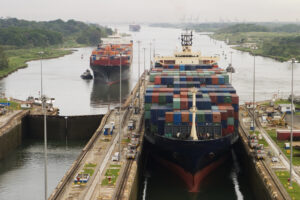Fifteen women of eight nationalities, working across six vessel types and ranks from cadet to master, shared their experiences of pregnancy at sea. For many women, their period ashore was marked first by uncertainty about what support, if any, they were entitled to. Not many had been briefed in advance on maternity rights or pay, leaving them to guess or assume the worst.
“Pregnancy is a natural part of life, yet at sea it too often becomes a source of fear, stress, and uncertainty,” says Susanne Justesen, director of human sustainability at the Global Maritime Forum. “No woman should have to choose between starting a family and continuing her career at sea. With the right structures in place, pregnancy can be handled safely and confidently, ensuring that women are supported, crews are prepared, and the industry retains the talent it so urgently needs.”
Based on interviews with 15 female seafarers of varying nationalities (Turkish, Filipino, American, Indian, Latvian, British, German, South African), ages, seniorities, and vessel types, a new report Pregnancy at sea: From hidden risk to retention edge from Global Maritime Forum’s All Aboard Alliance reveals how pregnancy among seafarers is still often handled through improvised and inconsistent practices, leaving many women feeling isolated and anxious and creating unnecessary risks to their safety, well-being, and careers. It also shows how simple, proven measures could transform this rarely acknowledged aspect of life at sea into a retention opportunity for the industry.
Financial pressure was a constant backdrop, often overriding medical guidance. Low or irregular wage replacement pushed women into risky choices such as concealing pregnancies longer, cutting leave short, or leaving the industry entirely.
Alongside money worries came identity struggles. For seafarers who had invested years into their careers, stepping away was often experienced as grief.
Yet there were also examples of practices that made a difference. When companies offered meaningful shore-based or remote roles, women stayed engaged and loyal.
Some companies also showed they could adapt quickly, turning lessons into policy.
For many women, the decision to hide a pregnancy was driven by economics. Without maternity pay or the option of alternative work, disclosing the truth could mean losing all income overnight.
The moment a pregnancy is disclosed at sea often comes down to the personality of the captain. With no written procedures in place, their reaction can determine whether a woman feels safe or rejected. For some, disclosure brought reassurance. For others, it was the opposite.
The first challenge many women faced was simply confirming their pregnancy. Several described ships where no pregnancy test was available at all, or where access meant leaving a paper trail that stripped away privacy. For some, the fact that there was only one woman on board made anonymity impossible.
Before a pregnancy is even confirmed, gaps in reproductive health and company guidance already shape women’s experiences at sea. Several interviewees described searching their company manuals in vain, finding nothing about pregnancy or even who to inform.
The timing of repatriation shaped women’s sense of safety and control. Where clear thresholds were agreed in advance, taking into account gestation, vessel type, and medical advice, seafarers could finish their rotations without unnecessary stress.
For many interviewees, the prospect of returning to sea after childbirth was a journey they had to navigate on their own. Companies often stayed silent or gave only vague responses, which were interpreted as a quiet signal that the new mothers were no longer wanted.
According to the report, many female seafarers are currently left to rely on secrecy, luck, or the goodwill of individual captains and managers, forcing them to conceal their situation. Without clear processes in place around maternity pay or a long-term pathway back to work, financial insecurity and career uncertainty were common among interviewees:
“Nobody is talking about being pregnant on board. We have lots of toolbox talks about safety, lots of drills, emergency audits, but pregnancy is a taboo topic.”
“As soon as you’re not on the boat, you’re not being paid, so I didn’t tell anyone.”
“The biggest challenge was, I think, making the decision to walk away from seafaring because, well, I also loved it.”
The challenges described in the report are stark, but the solutions are simple. Measures already in use in parts of the industry can make a decisive difference: weekly risk checks, modest duty adjustments, and personalised voyage lengths allow women to work safely into their pregnancies where possible.
Planned repatriation, continuity of pay, and defined re-entry pathways reduce attrition and help women return with pride and confidence.
What undermines safety, the report concludes, is not pregnancy itself but the uncertainty created by unclear procedures and income risks that drive women into secrecy. By flipping this on its head, maritime companies have the chance to not only create a safer onboard environment, but also to retain their female employees and attract more top female talent to an otherwise male-dominated industry facing a skilled labour shortage.



